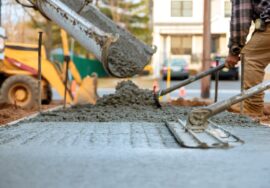
Resource Efficiency: Building a Sustainable Future
Resource Efficiency: Building a Sustainable Future
In the modern construction industry, sustainability isn’t just a trend — it’s a necessity. With rising environmental concerns, resource efficiency has become a crucial part of how we design, build, and operate structures. It’s about doing more with less — optimizing materials, energy, and water to reduce waste and environmental impact.
By focusing on resource , builders and designers can lower costs, conserve natural resources, and create long-lasting, eco-friendly buildings that benefit both people and the planet.
What Is Resource Efficiency?
Resource efficiency refers to the effective use of materials, energy, water, and land throughout a building’s life cycle — from planning and construction to operation and demolition. The goal is to minimize waste and pollution while maximizing output and performance.
In simple terms, resource ensures that every unit of resource — whether it’s concrete, electricity, or water — delivers maximum value with minimum environmental harm.
Importance of Resource Efficiency in Construction
Construction is one of the world’s most resource-intensive industries. It consumes vast amounts of raw materials and generates significant waste. Implementing resource can transform this impact by:
-
Reducing Waste: Using recycled and renewable materials lowers landfill waste.
-
Saving Energy: Energy-efficient designs and systems reduce fuel consumption.
-
Lowering Costs: Optimized processes minimize material and operational expenses.
-
Enhancing Sustainability: Promotes long-term environmental balance.
-
Improving Building Performance: Efficient use of resources enhances durability and functionality.
Thus, resource efficiency is the foundation of sustainable construction and a key step toward a low-carbon economy.
Principles of Resource Efficiency
To achieve resource , construction projects must follow several key principles that guide sustainable development:
1. Reduce, Reuse, Recycle
Minimize waste by reusing existing materials and recycling construction debris wherever possible. This “3R” approach forms the basis of waste management and sustainable design.
2. Energy Efficiency
Integrate energy-efficient systems and passive design strategies to cut electricity usage and lower carbon emissions.
3. Water Conservation
Implement rainwater harvesting, greywater recycling, and efficient plumbing systems to save water during construction and operation.
4. Sustainable Materials
Select green materials with low embodied energy, such as bamboo, recycled steel, and fly ash-based concrete, to promote eco-friendly design.
5. Smart Building Technology
Adopt automation and sensors to monitor resource usage and optimize consumption in real time.

How to Improve Resource Efficiency in Construction
Here are practical ways builders and developers can enhance resource efficiency in their projects:
1. Design for Efficiency
Early-stage design decisions — including building orientation, natural ventilation, and thermal insulation — play a major role in reducing resource needs.
2. Optimize Material Use
Accurate material estimation and prefabrication reduce waste and excess inventory. Techniques like prefabricated construction also shorten project timelines.
3. Life Cycle Assessment (LCA)
An LCA evaluates the environmental impact of materials and systems across the building’s lifespan, ensuring truly sustainable choices.
4. Incorporate Renewable Energy
Using solar panels or wind energy reduces dependency on fossil fuels and enhances building performance.
5. Train and Educate Teams
Creating awareness among architects, engineers, and workers ensures that resource efficiency principles are implemented consistently across every stage.
Resource Efficiency in India
India’s fast-paced urbanization and infrastructure growth make resource more important than ever. With limited natural resources and increasing energy demand, the construction sector must adopt sustainable practices.
Government initiatives like the Bureau of Energy Efficiency (BEE) and Indian Green Building Council (IGBC) promote standards that encourage resource-conscious construction and green certifications like LEED certification.
Indian developers are now embracing resource efficiency by integrating smart technologies, recycled materials, and sustainable architecture to build climate-resilient structures.
Benefits of Resource Efficiency
Implementing resource efficiency brings both environmental and economic gains, such as:
-
Reduced Operational Costs: Lower energy and water bills.
-
Enhanced Durability: Efficient systems extend building lifespan.
-
Compliance with Green Standards: Supports LEED certification and other eco-labels.
-
Better Environmental Impact: Reduces carbon footprint and conserves resources.
-
Improved Brand Image: Demonstrates corporate responsibility and innovation.
Ultimately, resource efficiency ensures that development meets current needs without compromising the ability of future generations to thrive.
Partnering for Sustainable Construction
To achieve the highest levels of resource , collaboration between engineers, architects, and sustainability experts is essential.
At AMS India, we specialize in designing and implementing resource and energy-efficient building solutions. Our focus on sustainable materials, smart systems, and green certifications helps clients reduce costs while building responsibly.
Conclusion
Resource is more than just a construction strategy — it’s a commitment to responsible growth. By optimizing how we use materials, energy, and water, we can build smarter, cleaner, and more sustainable spaces for generations to come.
Incorporating resource into every stage of construction not only strengthens business value but also safeguards our planet’s future.
Together, we can create a built environment that truly reflects the principles of sustainability and innovation.








